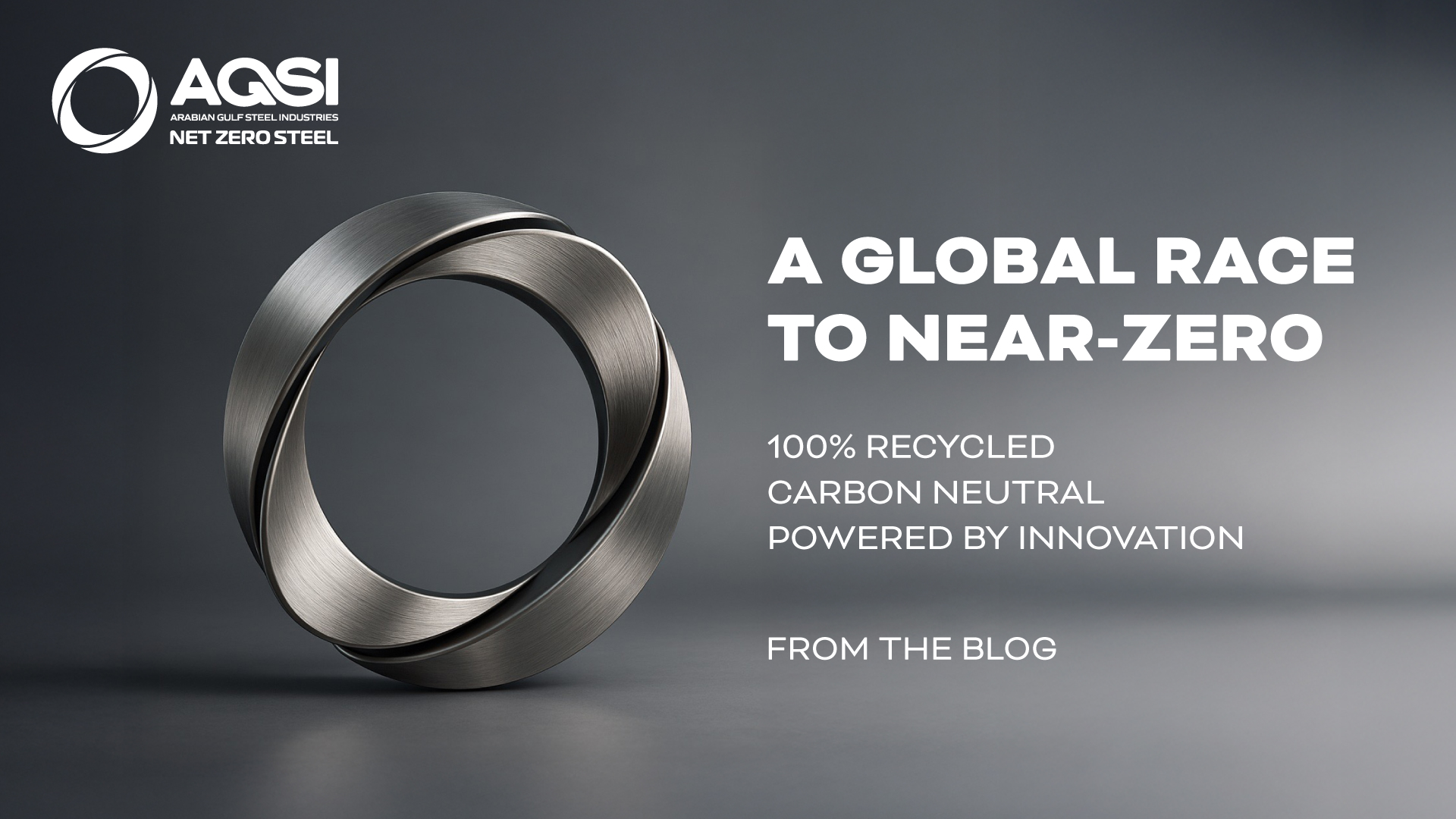As we reach the intersection of industrial legacy and climate urgency, the steel sector has become one of the most significant frontiers in the transition to net-zero. After decades of high-emission blast furnace operations, the steel sector is at a tipping point.
Steel’s Climate Reckoning
With nearly 50 near-zero carbon steel projects underway across the world (Reuters, 2024), this is clearly a sign that the world is moving away from outdated methods and toward cleaner steelmaking.
This effect could be described as more than just a technological ambition. It is a redefinition of the term of industrial progress itself. With steel holding the title as the framework of modern life, one can easily understand how that translates to not only strength but also significant environmental cost. To be precise, steel production contributes to as much as 7% of global CO₂ emissions (IEA, 2023).
The answer to that is the rapid evolution of new technologies and the emergence of never seen before business models.
The Global Pivot to Near-Zero
The race is led by companies and countries alike. For example, Sweden’s HYBRIT project aims to produce fossil fuel free steel from hydrogen. At the same time, Germany and Japan have committed billions to decarbonizing domestic production lines, while the United States looks to carbon capture and clean hydrogen pathways under the Inflation Reduction Act (IEA, 2024). So as we see the industrial sector aligning itself to global climate accords, financial pressures, and growing stakeholder expectations one can’t help but wonder: is technology the only component of the solution?
The answer is no. Real progress will be demonstrating the ability to scale solutions without trade-offs. In the case of steel sector, progress lies in the operational models that demonstrate green steel is not only possible, but competitive, verifiable, and impactful.
As global producers explore costly and experimental hydrogen-based methods to meet climate targets, some have already operationalized alternative, scalable models. AGSI is one of them.
Scaling What Works: AGSI’s Model
That’s where Arabian Gulf Steel Industries (AGSI) comes in, as the first steel company in the MENA region with a PAS 2060 certified net-zero steel production facility (Green Steel World, 2024). That’s something we take pride in. However, we didn’t just get to this point based on responding to trends. We anticipated, planned, and embedded sustainability into our foundation.
AGSI’s model may seem simple in concept but is rigorous in execution. One way we do it is by producing steel solely from 100% recycled raw material, eliminating the need for virgin iron ore extraction. According to LCAs, each tonne of recycled steel saves around 1.4 tonnes of iron ore (Birat, 2010). This approach conserves natural reserves and prevents the carbon-intensive mining and processing operations that are typically involved in steelmaking.
Furthermore, important to our environmental impact, is the technology we are using. Unlike traditional blast furnaces or even Electric Arc Furnaces, AGSI uses Electric Induction Furnaces (EIF), a cleaner and more energy-efficient way to recycle scrap steel. This is what we refer to as AGSI’s electric steelmaking technology. Utilizing certified renewable electricity, our operations produce up to 90% smaller Scope 1 and Scope 2 footprints than our conventional counterparts. That reduction is significant.
In a region where hydrogen infrastructure is still evolving, AGSI’s choice of electric induction furnaces, powered by renewables represents a realistic and scalable path to near-zero steel.
Beyond Emissions: Building Trust Through Transparency
Yet, the role of sustainability at AGSI extends beyond energy and raw materials. It is also about visibility. Our traceability system, powered by integrations with compliance systems like CARES, allows complete transparency in the supply chain (CARES, 2023). This means our clients are confident in the quality of our steel but also the quality of the process it took to obtain and create it.
While many global projects are still in planning or testing stages, AGSI has already delivered commercially viable, net-zero certified production, backed by industrial partnerships and independently verified emissions data.
But we also recognise that numbers alone don’t build trust, relationships do. That’s why we’re forging long-term partnerships with leading construction and infrastructure groups, including Trojan Construction Group, and Aldar. These represent real-world applications proving that green steel isn’t just achievable; it’s applicable and scalable.
Leading With Impact, Not Just Innovation
So, as the world demands more and more sustainability from the industries that make up our built environment and as worldwide push in decarbonizing steel is on, AGSI is not following that trend, we’re leading it in our region, with clean energy, recycled materials, digital traceability and a vision for the future.
With certified processes and auditable inputs, AGSI is equipped to deliver net-zero steel at scale, meeting the expectations of a market increasingly defined by regulation, traceability, and proof. This is not the start of a plan, but the continuation of a path we have already committed to.
References
- Birat, J.P. (2010). The steel industry, abiotic resource depletion and life cycle assessment: A real or perceived issue?Journal of Cleaner Production. [online] Available at: https://www.sciencedirect.com/science/article/abs/pii/S0959652610003483
- CARES (2023). Certification Services. [online] Available at: https://www.ukcares.com/
- Green Steel World (2024). AGSI Declares Net-Zero Steel Facility in the UAE. [online] Available at: https://greensteelworld.com/agsi-declares-net-zero-facility-in-the-uae
- IEA (2023). Iron and Steel Technology Roadmap. [online] Available at: https://www.iea.org/reports/iron-and-steel-technology-roadmap
- IEA (2024). Decarbonising Industry in 2024. [online] Available at: https://www.iea.org/reports/decarbonising-industry-in-2024
- Reuters (2024). Steel Companies Yet to Prove Their Mettle in Race to Net-Zero. [online] Available at: https://www.reuters.com/sustainability/climate-energy/steel-companies-yet-prove-their-mettle-race-net-zero-2024-06-03
UN Global Compact Network USA (2024) Various Reports and Newsroom Updates.
- Seramount, 2024
Seramount (2024)Top 5 DEI Trends for 2024. [online] Available at: https://seramount.com/articles/top-5-dei-trends-for-2024/ - UN Global Compact, 2023
UN Global Compact (2023)Annual Report 2023


